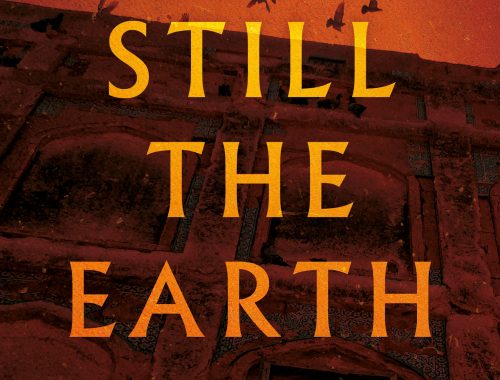The Long Earth
Terry Pratchett and Stephen Baxter
 Normally, when there was nothing to do, he listened to the Silence.
Normally, when there was nothing to do, he listened to the Silence.
The Silence was very faint here. Almost drowned out by the sounds of the mundane world. Did people in this polished building understand how noisy it was? The roar of air conditioners and computer fans, the susurration of many voices heard but not decipherable … this was the office of the transEarth Institute, an arm of the Black Corporation. The faceless office, all plasterboard and chrome, was dominated by a huge logo, a chesspiece knight. This wasn’t Joshua’s world. None of it was his world. In fact when you got right down to it, he didn’t have a world; he had all of them.
All of the Long Earth.
The premise of this book is that the Earth is just one link in a long chain of Earths, each different. Plans are leaked onto the internet of a box, known as a “Stepper”, built from simple electronic parts and powered by a potato, with a three way switch on the top. Operating the switch allows a person, along with anything they are carrying, to “step” one link along the chain, either “East” or “West” as the two directions have been dubbed. Collectively, the whole chain is known as The Long Earth.
Most people can step using these boxes, though they experience severe nausea each time, so they tend to only move a few steps away from our Earth. A few people, such as Joshua are natural steppers, and can do so without the aid of the stepper box and with no ill effects; others cannot step at all. The tension between these groups is a constant undercurrent throughout the book.
It appears that humans have only evolved on our Earth (the Datum as it is called), so the Earths East and West of us are ripe for colonisation and solve overcrowding. The only snag is that objects made out of iron cannot be taken, though no-one knows why. Any steel has to be mined and forged on the planet it originated on.
The majority of the book follows Joshua, a recluse who, after some persuasion, foregoes his usual solitary lifestyle to go on an adventure. He beging exploring deep into The Long Earth with Lobsang, an AI who claims to have once been human (Lobsang seems to be a name that crops up a lot in Pratchett’s work!). Lobsang has built an airship called The Mark Twain that is capable of stepping much faster than any human can – worlds flick past in the blink of an eye, and they only stop when they find something interesting. They choose to travel West, in a choice I can only assume is meant to mirror the Westward exploration and colonisation of North America.
Unfortunately, Lobsang is a bit of a throwaway character – He’s quite quirky and funny, but I get the feeling he only exists to explain things to Joshua (and through him to the reader), and seems to spend the majority of his time being smug each time he does something new.
However, there are other groups of characters who offer alternative viewpoints to The Long Earth and its consequences, a group of settlers on their way to colonise an Earth ideal for their desired agricultural small town lifestyle; the police force in Madison, Wisconsin who have to make sense of everything that’s happened, and maintain law and order across several versions of their town; various groups of politicians bickering about who owns the other Earths, how to tax the people; other natural steppers who are hiding out a long way from Earth Zero; the nuns who brought Joshua up in the orphanage, etc.
It’s a fascinating novel that never gets dull as the book progresses, though I get the feeling that Pratchett and Baxter were struggling to find a good ending for this book – after all, if there are an infinite number of Earths on the chain, where do you stop? There’s a “shock” ending when the non-steppers have set off a nuclear bomb in Madison, the town where Joshua grew up, though the reasoning behind this is suspect. Why would the non-steppers want to destroy the only planet they have?
Verdict: A great start to the series, which feels more like a Baxter novel than a Pratchett. I can’t wait to read The Long War later in the year, which should hopefully answer some of the questions raised.
Reviewed by Keith
Publication Date: June 2012
Format: Hardback
Pages: 344
Genre: Science Fiction
Reviewer: Keith
Source: Own Copy
Challenge: British book


